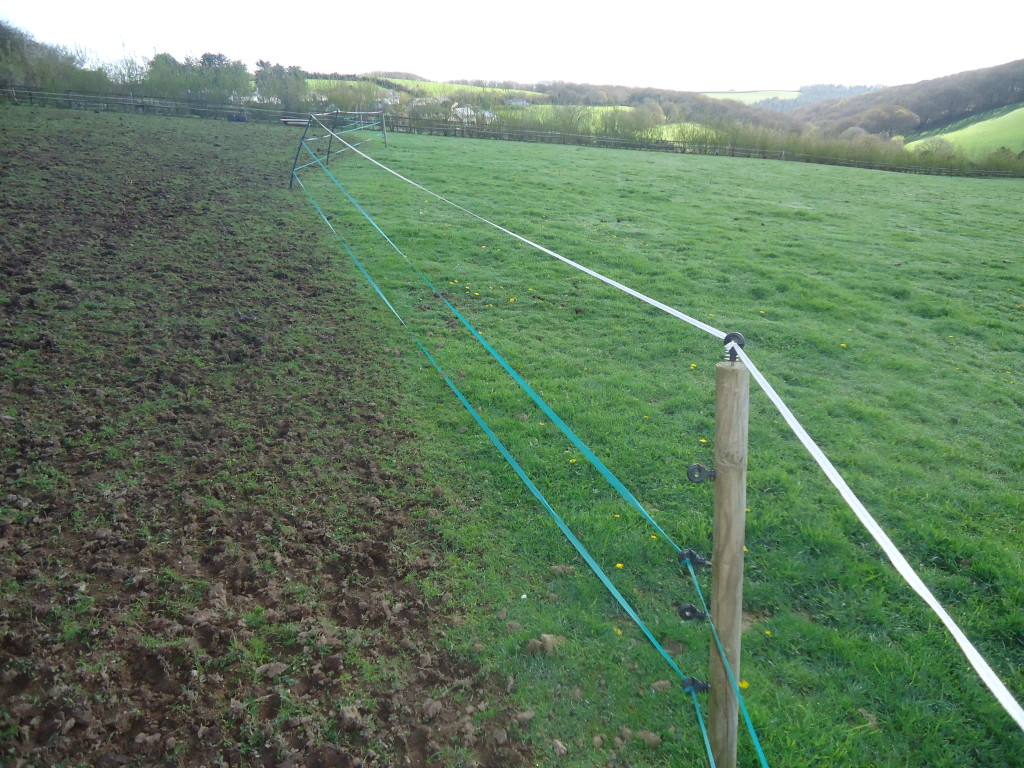Rather than having them housed in a barn all winter, I choose to out-winter my cattle. Like my other livestock, I selected a breed – Dexters – that are hardy and, given the right shelter, facilities and feed, well able to handle this.
Winter 2011/12, my first with cattle, was not too wet at all, and the stock were regularly rotated around the paddocks so as to minimize their impact on the pasture – this worked relatively well. The following winter the ground held more water, which meant that early on I had to make a decision regarding how to manage my cattle and pasture so as to avoid widespread poaching. Over the worst of that winter I kept the cattle in one large paddock with a good tall hedgerow sheltering them from the prevailing South-Westerlies; on the odd occasion when the (colder) wind came from the North or East, they were moved down to another paddock on the other side of the holding where they were sheltered by a tall and thick wall of holly. This worked reasonably well, but the main winter paddock was noticeably worn/compacted compared to the rest of the pasture. Although the pasture regenerated to some extent of its own acord over the following Spring/Summer, I realised I would have to address the issue at some point.
Move forward to Winter 2013/14 – the wettest on record! It was a no-brainer to keep the cattle in the same paddock that had suffered the previous winter – as well as already being degraded, this was the place that offered great shelter from the incessant storms that rolled in from the SW. However, it soon became apparent that even my free-draining land was going to be hit hard. I formed a plan to gradually open more ‘fresh’ areas of paddock in that corner so that the cattle had a better lie than the more poached areas. When a ‘fresh’ area became overly muddy, I opened another. Although the area around the rack where they were fed the Winter haylage became badly poached (and needed regular shovelling to to keep the mud relatively shallow!) there was better ground available for respite. By mid-April of this year, when I could contemplate opening the ‘saved’ paddocks to grazing I had a paddock that I knew would be requiring my attention – the contrast between the sacrificed and the saved paddocks is clear in the above photo! It was while researching my options for rehabilitating the poached paddock, that I came across the notion of a ‘sacrificial paddock’ – though mainly as used by horsey folk who often put down various ground materials over a smaller paddock to give dobbin a decent all-weather surface.
I have been building a plan for what to with this paddock for most of the winter – as part of my wider plans for the land that have been developing over the last 2-3 years. ‘The problem is the solution’ is a key attitudinal principle of permaculture – although I feel that I understand the sentiment, I find the wording clunky. I prefer to work with “the ‘problem’ presents opportunities”. And it is the opportunities that this sacrificial paddock presents that are interesting me at the moment. I don’t want to give too much away at this stage, since the design isn’t finalised – but I can say that it won’t be a standard plough/cultivate and re-seed. Details to follow …
